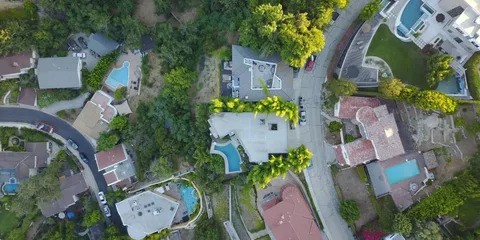
In the competitive world of real estate, capturing the attention of potential buyers is paramount. Traditional photography methods, while effective, often fail to showcase the full potential of a property. Enter real estate drone photography and real estate aerial photography—innovative techniques that provide dynamic perspectives and comprehensive views, setting listings apart in a crowded market.
The Rise of Drone Technology in Real Estate
The integration of drone technology into real estate marketing has transformed how properties are presented. Initially, aerial shots required expensive equipment like helicopters, making them inaccessible for many. However, advancements in drone technology have made aerial photography more affordable and accessible. Drones equipped with high-resolution cameras can capture detailed images and videos from various angles, offering a comprehensive view of a property and its surroundings.
Benefits of Real Estate Drone Photography
-
Enhanced Visual Appeal: Aerial images provide a unique perspective, highlighting the property’s layout, size, and proximity to amenities. This bird’s-eye view can make a listing stand out, attracting more potential buyers.
-
Cost-Effectiveness: Compared to traditional methods like hiring helicopters, drones offer a more budget-friendly option for capturing aerial footage. This affordability allows real estate drone photography professionals to allocate resources to other marketing strategies.
-
Time Efficiency: Drones can quickly capture a series of shots, reducing the time spent on photo shoots. This efficiency ensures that listings can be updated promptly, keeping the content fresh and relevant.
-
Comprehensive Property Showcases: Drones can access areas that might be challenging to photograph from the ground, such as rooftops or expansive backyards. This capability ensures that all aspects of a property are showcased, providing a complete picture to potential buyers.
Applications of Real Estate Aerial Photography
Real estate aerial photography encompasses a broader range of techniques, including drone photography, to capture expansive views of properties. This approach is particularly beneficial for large estates, commercial properties, or developments with unique features.
-
Highlighting Property Features: Aerial shots can emphasize unique aspects of a property, such as sprawling lawns, swimming pools, or architectural designs, that might not be evident in standard photographs.
-
Contextualizing Location: Showing the property’s position relative to nearby landmarks, roads, or neighborhoods provides potential buyers with a better understanding of its location and accessibility.
-
Creating Immersive Experiences: Combining aerial footage with interior shots can create virtual tours, allowing prospective buyers to explore the property remotely. This immersive experience can be particularly appealing to out-of-town or international buyers.
The Future of Real Estate Marketing
As technology continues to evolve, the future of real estate marketing looks promising. The integration of virtual reality (VR) and augmented reality (AR) with aerial photography can offer even more interactive experiences. For instance, potential buyers could use VR headsets to take virtual tours of properties, exploring every corner as if they were physically present.
Moreover, the use of drones for real estate marketing is expected to increase, with advancements leading to even higher-quality imagery and more innovative applications. This progression will further solidify the role of aerial photography in real estate marketing strategies.
Conclusion
Real estate drone photography and aerial photography have revolutionized property marketing by providing dynamic, comprehensive, and cost-effective solutions. These techniques not only enhance the visual appeal of listings but also offer potential buyers a clearer understanding of a property’s features and location. As technology continues to advance, the integration of drones and aerial photography in real estate marketing will undoubtedly become more prevalent, offering even more innovative ways to showcase properties.